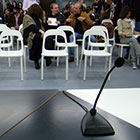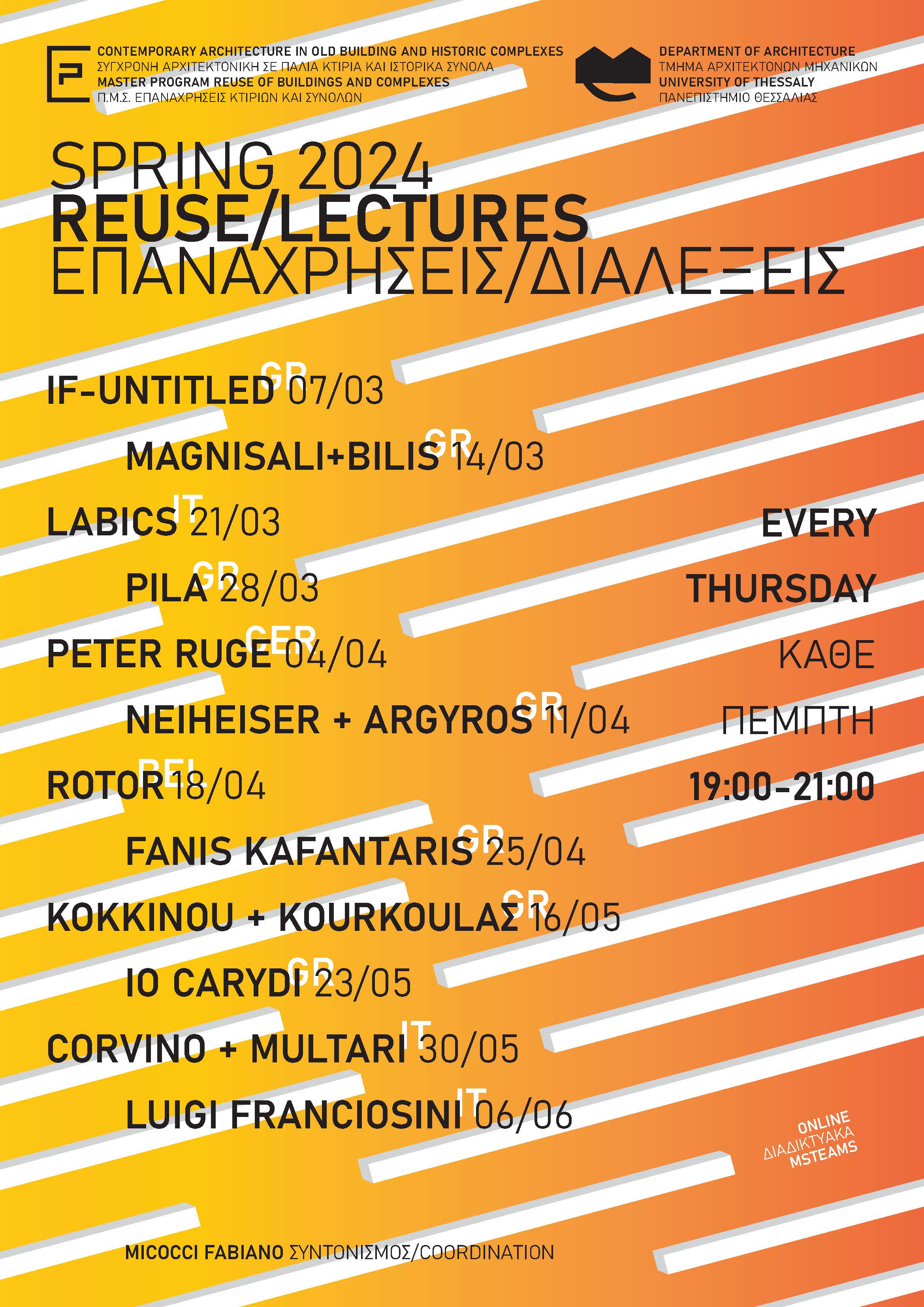In the framework of the Master Program Reuse of Buildings and Complexes at the Department of Architecture of the University of Thessaly, on Thursday 28/3 at 19:00 [UTC+3] on MS TEAMS will take place the first online lecture from PILA on the theme of History Continues.
Coordination: Fabiano Micocci, UTH
MS Teams link
LECTURE by Dimitra Siatitsa
Research-Action for Collaborative Housing: Models, Cases, and Challenges for Greece
Wednesday 27.03.2024 19:00 – 21:00
MS Teams: https://surl.ms/Hv3
The lecture will take place online in the framework of the course: COLLECTIVE INHABITATION MODELS: ARCHITECTURES OF CARE. Instructor: P. Phokaides, Ass. Prof. Dept. of Arch, UTh.
Short bio:
Dimitra Siatitsa is a postdoctoral researcher in urban and housing issues (NTUA/EKKE). She holds a PhD from the Department of Urban and Regional Planning (NTUA), a master’s degree on Architecture and Urban Culture (FPC- UPC) and a diploma on Architecture (NTUA). Her work focuses on housing and urban space, socio-spatial inequalities, public policies, alternative initiatives, and social movements, with an emphasis on Southern Europe. She has collaborated on research projects in Greece and European programs. She has professional experience in policy making in the field of social solidarity and housing, at local and central levels. She has teached urban planning and design at the School of Architecture of AUTH and in the postgraduate program for Social and Solidarity Economy at the Hellenic Open University. She is a founding member of the research-action group for cooperative housing CoHab and a member of the coordinating committee of the working group on Housing in Southern Europe of the ENHR.
SADAS - Panhellenic Association of Architects and the University Studio Press publishing house invite you to the presentation of the book "Smyrni (1870-1922). City and Architecture. The contribution of the Greeks" by the emeritus professor of Dept. ARCH UTH Vassilis Kolonas on Wednesday 3/27/2024 at 18:30 at Magnesia's department of Technical Chamber of Greece, Volos.
Blended Intensive Program (BIP)
Bauhaus Dessau Archiscape
Dessau 25 May -31 May 2024
Dept. of Architecture University of Thessaly, Αnhalt University of Applied Sciences (Dessau), Εcole Nationale Supérieure d'Architecture de Nantes (Nantes) and the University Luigi Vanvitelli (Napoli) co-organize a Blended Intensive Program (BIP) within the Erasmus + Framework. The program will take place physically in Dessau from 25 May to 31 May 2024 and virtually before and after these dates.
The program will connect with the concept of Organic Architecture & Design in order to develop new perspectives of interdisciplinary conceptual learning.
Through crisis, experience and scientific exploration we have learned that we need to maintain an organic relationship with nature if we want to cultivate a sustainable and humane society, a liveable environment and healthy cities. The BIP will offer a platform for design collaboration and discourse to a group of 35 students who will be working in 5 international teams on new perspectives for organic architecture.
7-10 students of the Dept. of Architecture UTH can participate at the BIP. This is the full program of the BIP.
For those interested in the program there will be a meeting at the Department’s open amphitheater Tuesday 26/3/2024, at 14.00 with prof. V. Trova and ass. Prof. F. Micocci
Blended Intensive Program (BIP)
The “Freie Universität Berlin”, an ideal city as groundscape
Berlin 25 April -4 May 2024
Dept. of Architecture University of Thessaly, Αnhalt University of Applied Sciences (Dessau), Εcole Nationale Supérieure d'Architecture de Nantes (Nantes) and the University Luigi Vanvitelli (Napoli) co organize a Blended Intensive Program (BIP) within the Erasmus + Framework. The program will take place physically in Berlin from 25 April to 4 May 2024 and virtually before and after these dates. Ten students of the Dept. of Architecture UTH can participate at the BIP. This is the full program of the BIP.
For those interested in the program there will be a meeting at the Department’s open amphitheater Tuesday 26/3/2024, at 14.00 with prof. V. Trova and ass. Prof. F. Micocci
In the framework of the Master Program Reuse of Buildings and Complexes at the Department of Architecture of the University of Thessaly, on Thursday 21/3 at 19:00 [UTC+3] on MS TEAMS will take place the first online lecture from Labics IT on the theme of Architettura Viva.
Coordination: Fabiano Micocci, UTH
MS Teams link
Meeting 3: Reuse for Urban Regeneration
Saturday 27/01/2024 at 10:00-13:00 [UTC+3]
Online
In the framework of the course Contemporary Architecture in Old Buildings and Historic Complexes, part of the Post-graduate Master of Reuse of Building and Complexes, on Saturday 27/01/2024 at 10:00-13:00 [UTC+3] will be organized the online conference “Reuse for Urban Regeneration”.
Program
10:00-10:15 Beginning of the conference
Session1: Reusing the Industrial Landscape
10:15-10:45 Κώστας Αδαμάκης, ΠΘ - “Τα βιομηχανικά κτίρια του Βόλου”
10:45-11:15 Ασπασία Κουζούπη, ΠΘ - “Επανάχρηση προκατασκευασμένων δομών και παράπλευρων προϊόντων του εργοταξίου, ως διαδικασία σύνδεσης με το Τοπίο”
11:15-11:30 Questions
11:30-11:45 Break
Session 2: Reuse for Urban Regeneration
11:45-12:15 Νίκος Μπελαβίλας, ΕΜΠ - “Το πείραμα της αναγέννησης του Λαυρίου μετά την κρίση της αποβιομηχάνισης (1990-2024)”
12:15-12:45 Nadia Bertolino, UniPV - “Radical adaptation: community-led practices of spatial reuse”
12:45-13:00 Questions and conclusions with students
Coordination: Micocci Fabiano, UTH



